Even in our connected and technological age, stigma persists about drug addiction. Parents may not want to believe that their child could become a drug addict, and there is still much misunderstanding about things such as prescription drug abuse and its risks. Education is a vital approach for dealing with this stigma and these prevalent misconceptions, and a recent forum held by the Council on Addiction Prevention and Education (CAPE) and the Wappingers Central School District (Dutchess County, New York) is a perfect example of the value of the approach. The increasing rates of drug abuse in Dutchess County is of great concern to politicians and local experts, and the success of the mid-March program by the Wappingers school district has led numerous other districts to plan similar events in April, with the aim of curbing the growing issue.
What Happens At Drug Abuse Forums?
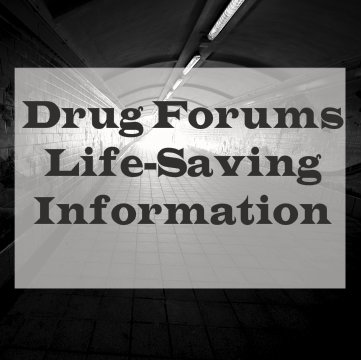 Drug abuse forums give those with direct experience of addiction and the process of recovery to share their stories, offering educational messages to the audiences, who are often teens but could also include their parents and members of the local community. This allows those in attendance to understand the sheer scope of the harm caused by drug abuse and addiction, and although not all of the stories end positively, many offer hope to those struggling with addiction by showing that recovery is possible. Talks will either be given by the ex-users themselves or by family members or loved ones. Due to their emotional nature, they are frequently poignant, moving and memorable.
Drug abuse forums give those with direct experience of addiction and the process of recovery to share their stories, offering educational messages to the audiences, who are often teens but could also include their parents and members of the local community. This allows those in attendance to understand the sheer scope of the harm caused by drug abuse and addiction, and although not all of the stories end positively, many offer hope to those struggling with addiction by showing that recovery is possible. Talks will either be given by the ex-users themselves or by family members or loved ones. Due to their emotional nature, they are frequently poignant, moving and memorable.
Lessons Learned The Hard Way
The event held in March featured many such stories told to a full auditorium at John Jay Senior High School. This was partially thanks to a new initiative on the part of high school coaches that makes attendance mandatory for student athletes, an approach praised by CAPE. The talks cut through the stigma surrounding addiction and showed that the process is very much one of “learning lessons the hard way.”
One speaker was Suzanne DeCosta, who spoke about her son’s addiction to narcotic painkillers and heroin. She described him as “smart, funny and lovable,” but during his teen years, what was once recreational drug use turned into addiction. DeCosta comments that “as a parent, you don’t ever want to believe your child is an addict,” but points out that this is wishful thinking—it can happen to anyone. Her son Michael overdosed on heroin, and has had numerous stretches in rehab. At present, he is two years sober, but the family is more than aware that it will require continued effort on his part to stay in recovery. They say they’re lucky to have him alive.
Other stories didn’t have the same positive, uplifting ending: Marcia Grant’s son, Roger, died at the age of 41 from a heroin overdose in a motel room. She described her son in his youth as “bright” and “affectionate,” but added that he was impulsive and reckless, pointing out that he broke a lot of bones. Doctors advised them that he would experience a lot of pain, and Marcia says they were right, “Pain, both physical and emotional […] kept bringing him back to drugs.”
The first signs of a problem came in his teen years when Roger’s grades began to slip and his behavior changed notably. He started to lie and his moods changed, and eventually—at the age of 22—he admitted to his issues and his parents tried to get him help. He was in and out of rehab centers, attending 11 inpatient programs, but would only have brief periods of sobriety and stability. He almost overdosed several times, and got into trouble with the law through his addiction. “At the time we didn’t realize that there was no simple fix,” said Martha. She added that he’d wanted to warn children about the risks of drugs, and she wanted to pursue this goal for him, in his absence.
Why These Events Are Essential
Drug education is vital, but dry repetition of statistics, risk ratios and far-off consequences don’t always pack much of a punch, particularly from an emotional perspective. The stories shared at drug abuse forums provide evidence for the potential consequences, but also offer a personal insight into the nature of addiction and the difficulties faced in recovery. The stories are real, told by somebody at the center of it all, and have more power to capture the attention of teens as a result. The consequences of drug abuse might not come immediately, but these speakers remind teens and parents that they do come eventually. If you don’t learn the lessons now and try to get clean, the problem will snowball until you’re forced to learn them the hard way. As more of these messages get out, fewer teens will need to learn them from life-threatening, first-hand experience.
Have You Talked To Your Teen About The Dangers Of Inhaling Alcohol?
The FDA’s approval of a drug it says “will fill an important niche” in the treatment of chronic pain has caused a huge uproar over fears about its potential for abuse.
Zohydro was given the go-ahead in October 2013 for the treatment of moderate-to-severe chronic pain. Developed by the pharmaceutical company Zogenix, Zohydro is composed of an unmixed, undiluted 50-milligram shot of the opioid analgesic hydrocodone, which is the primary ingredient in the well-known and widely prescribed pain-relieving drug Vicodin. Zohydro is approximately five times more potent than Vicodin, however, and according to FDA Commissioner Dr. Margaret Hamburg, it will fill “an important and unique niche” in the crowded prescription painkiller marketplace. Zohydro was released in March, and all patients who receive a chronic pain diagnosis will now be eligible to obtain a prescription for this powerful narcotic.
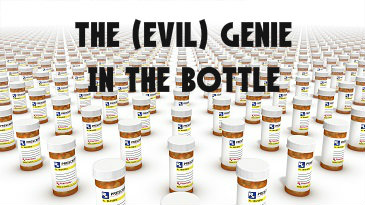 But the FDA’s decision to approve the release of Zohydro was highly surprising, since its own advisory panel had voted 11-2 against approval. The medical authorities appointed to this panel cited the highly addictive nature of opioid medications as the rationale for their thumbs-down verdict. In the months that have passed since the Zohydro ruling, the criticism directed at the FDA has only intensified, and the agency has been forced to repeatedly defend a decision that many see as indefensible.
But the FDA’s decision to approve the release of Zohydro was highly surprising, since its own advisory panel had voted 11-2 against approval. The medical authorities appointed to this panel cited the highly addictive nature of opioid medications as the rationale for their thumbs-down verdict. In the months that have passed since the Zohydro ruling, the criticism directed at the FDA has only intensified, and the agency has been forced to repeatedly defend a decision that many see as indefensible.
Addiction to pharmaceutical-grade painkillers has reached epidemic proportions, and the U.S. Centers for Disease Control has confirmed that opioids like OxyContin and Vicodin are the primary villains in this unfolding tragedy. Many medical professionals apparently came to view these drugs as panaceas and began prescribing them for all degrees of pain and a vast assortment of conditions, and, as a result, opioid addiction rates exploded. Since Zohydro is just a turbo-charged version of Vicodin, it is likely to be far more addictive than its milder cousin, and many medical experts believe it is the height of folly, if not downright hypocritical, for the government to be putting such a potentially dangerous substance into circulation at a time when the fight against prescription drug abuse has just begun to pick up steam.
In September 2013, the FDA announced it was actually tightening label restrictions on opioid painkillers, recommending that physicians use them only with patients who needed round-the-clock treatment for chronic pain and when there were no other viable treatment options available. This action was unequivocally justified as a strategy to combat addiction, so observers were taken aback when only one month later the FDA chose to approve a drug that threatens to accelerate the opioid addiction problem.
Critics of the FDA’s decision launched a campaign to convince the organization to change its minds, and representatives of more than 40 influential healthcare/addiction treatment organizations signed and submitted a letter to the agency that outlined the dangers of adding Zohydro to the menu of available opioid painkillers. But this ardent plea from the experts was to no avail, and the FDA steadfastly refused to reverse its puzzling course.
The (Evil) Genie in the Pill Bottle
The FDA is often accused of having an overly cozy relationship with big pharma and big agriculture, the industries it has been tasked with regulating, and this decision to legalize a new narcotic painkiller despite the negative judgment of its handpicked medical advisors would seem to represent a triumph of favoritism over sensible public policy. In response to what many see as an outrage, separate bills have now been introduced in the House and Senate that if passed would compel the FDA to remove Zohydro from the marketplace.
Compounding the situation, later in the year the drug giant Purdue Pharma will release another single-ingredient/high-dose hydrocodone painkilling drug, in a tamper-resistant form that may render Zohydro obsolete. This company already sells a tamper-resistant version of OxyContin, which allegedly cannot be crushed or dissolved for chewing or snorting and therefore is not supposed to be as addictive (chewing or snorting opioids delivers a more concentrated dosage to the bloodstream). A less malleable form of mega-jolt hydrocodone would presumably offer the same advantages, and the folks manufacturing Zohydro would likely have to switch to a tamper-resistant form themselves if they expected their drug to survive.
But addiction treatment specialists dispute the notion that making addictive drugs harder to alter makes them less dangerous. They note that virtually every person who has become dependent on opioid painkillers started out swallowing pills and only later resorted to chewing or snorting when their substance abuse problems raged out of control. Nevertheless, many fear the positive PR that tamper-resistant technology has received may help to defuse some of the opposition that this new class of drugs has generated, assuming they do eventually show up on the marketplace in this more “respectable” form.
Read How Big Pharma Is Testing Super Painkillers
The United States is awash in opioid painkillers with addiction rampant. Since 1999 prescriptions for opioids have tripled and the number of opioid-related deaths have quadrupled, with legally prescribed medications now accounting for 60 percent of drug overdoses. There are five million Americans currently addicted to opioids, and three out of four overdose fatalities are caused by opioids. So do we really need another opioid medication? Do the benefits outweigh the risks?
What Is Zohydro?
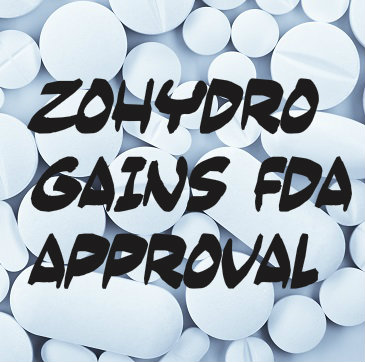 A new opioid called Zohydro, approved by the Food and Drug Administration (FDA) in late 2013, is Hydrocodone with an extended, 12 hour release formula. For comparison, the painkiller Vicodin is Hydrocodone with acetaminophen. Zohydro has no acetaminophen – it’s unadulterated Hydrocodone that has been described as five or 10 times stronger than Vicodin. A single tablet could kill a child, and two pills could be enough to kill an older person unaccustomed to opioids.
A new opioid called Zohydro, approved by the Food and Drug Administration (FDA) in late 2013, is Hydrocodone with an extended, 12 hour release formula. For comparison, the painkiller Vicodin is Hydrocodone with acetaminophen. Zohydro has no acetaminophen – it’s unadulterated Hydrocodone that has been described as five or 10 times stronger than Vicodin. A single tablet could kill a child, and two pills could be enough to kill an older person unaccustomed to opioids.
Additionally, the pills are not crush or addiction resistant. As the opioid epidemic grew, many manufacturers reformulated their pills in order to make them more difficult to abuse. One way to achieve this is to add certain ingredients to the pills which cause unpleasant side effects if they are crushed and snorted or injected. Those side effects are not present when the drugs are taken orally as prescribed. People addicted to opioids often snort or inject them in order to get a fast and intense high.
FDA Approval Of Zohydro
However, the FDA decided to approve Zohydro with none of these precautions in place. A loud outcry from doctors, congressmen, pharmacists, lawyers, addiction specialists and state Attorneys General followed. All of these and more have asked the FDA to reconsider its decision to approve the potent new drug. Add to the list the FDA’s own advisory panel which voted overwhelmingly (11-2) to withhold approval of Zohydro.
A group of experts has written a forceful letter to the FDA urging it to rethink its decision to approve Zohydro. The addiction risk is simply too overpowering, the experts explain.
A look at the benefits gained versus risks imposed lead experts to say this should be enough to halt the drug’s release. We already know it‘s impossible to keep drugs in the hands of pharmacists, physicians and legitimate patients. A certain amount will inevitably be diverted toward un-prescribed and illicit use. And that, in turn, will mean a surge in opioid addiction.
Experts agree that the more opioid pills available in the country, the greater the risks for addiction. So one would expect approval of new opioids to be very hard to come by, which is what makes the Zohydro case so very perplexing.
There is an already a climate of opioid abuse. Opioids without tamper-resistant formulas or addiction-resistant formulas are ripe for abuse. And important voices from every direction are crying “Stop!”
Read About Understanding Opioid Related Disorders
Marijuana as a recreational drug is now legal in Washington and Colorado, and it’s legal medicinally in 18 other states. But a recent research paper raises legitimate questions about the drug’s safety. One of proponent’s main arguments in favor of legalized marijuana has been the absence of overdose deaths associated with sole use of the drug. The article calls that assertion into question.
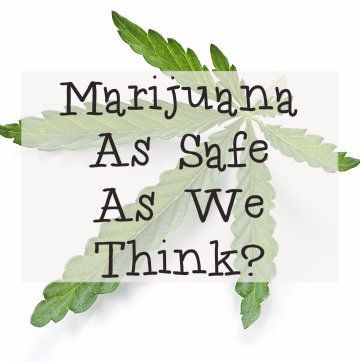 Public perception is that a person who uses marijuana on its own is safe. In fact, a 2011 U.K. Department of Health report said “no cases of fatal overdose have been reported” due to marijuana use and “no confirmed cases of human deaths” had been found.
Public perception is that a person who uses marijuana on its own is safe. In fact, a 2011 U.K. Department of Health report said “no cases of fatal overdose have been reported” due to marijuana use and “no confirmed cases of human deaths” had been found.
The new report suggests that marijuana is not quite that safe. In the study, German researchers took a look at 15 individuals whose deaths were somehow related to use of marijuana. The investigators performed careful post-mortem tests to identify and rule out other factors which may have been responsible for the deaths.
Scientists ran genetic tests, examined organs, performed an autopsy and asked for a toxicology report to screen for possible problems, such as liver disease, alcohol abuse or other conditions which could seriously compromise health and life.
Is Marijuana Overdose Possible?
One of the German researchers involved with the study said he believes marijuana overdose to be rare but possible. They discovered that two of the 15 persons were found to have the psychoactive ingredient THC in blood samples in amounts that indicated they had been using marijuana just hours before they died. In both cases the men’s hearts had experienced arrhythmia, meaning their hearts were beating either too quickly or too slowly. The change was drastic enough that it killed the two men, ages 23 and 28. One was found to have a significant but formerly undetected heart condition, and the other had a personal history of substance abuse apart from marijuana use. The study did not determine how marijuana caused the deadly arrhythmias.
The report is considered the first proof that deadly marijuana overdose is possible, even if infrequent. It suggests that further investigation is warranted into cases where marijuana use took place near to the time of death. Other risks, such as impaired memory, schizophrenia and depression have been associated with use of marijuana. Now it’s time to re-evaluate whether deadly overdose is another potential risk.
02 Apr 2014
The War Against Designer Steroids
Stories of famous athletes caught using performance enhancing steroids have become so numerous as to practically elicit a yawn. But taking steroids to improve muscle size and responsiveness is as unhealthy as it is illegal. Professional athletes take these kinds of drugs intentionally, but others may be taking a form of anabolic steroid without even realizing it.
Identifying Falsely Marketed Steroids
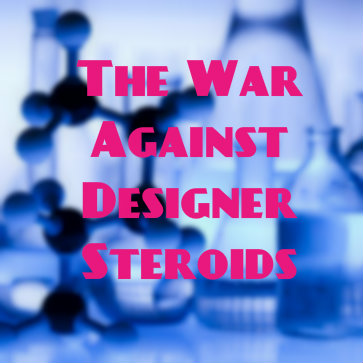 Thousands of American men and women purchase dietary supplements which claim to boost muscle. The supplements claim to be safe and, legally speaking, contain no banned ingredients. However, plenty of these sports supplements contain what are referred to as “designer steroids.”
Thousands of American men and women purchase dietary supplements which claim to boost muscle. The supplements claim to be safe and, legally speaking, contain no banned ingredients. However, plenty of these sports supplements contain what are referred to as “designer steroids.”
Designer steroids, like designer drugs, are man-made substances that mimic the effects of known drugs. These chemical compounds are not identical to a certain illegal substance, but they’re similar enough to yield many, if not all, of the same effects. The benefit to designer steroids? They are not technically illegal so they can be sold with impunity. And many consumers have no idea that what they’re taking is essentially the same as a drug the U.S. has banned.
Designer steroids fall just outside the Drug Enforcement Administration’s (DEA) list of illegal compounds. Each time the DEA adds a new steroid compound to the list designers simply tweak the recipe enough to remain beyond the reach of the law. But a new bill would include more substances and make fighting these drugs easier.
What Is The DEA Doing About It?
It’s called the Designer Anabolic Steroid Control Act. Senator Orrin Hatch of Utah and Senator Sheldon Whitehouse from Rhode Island co-sponsored the bill which aims to close the existing loophole. The Act broadens the power of the DEA by adding 27 new substances to the list of controlled anabolic steroids.
It would also empower the DEA to place newly identified designer steroids on the list on a temporary basis so that swift action could be taken. The substances could then be added permanently to the list of prosecutable substances in due course.
Improving the agility of the DEA is crucial if progress is to be made in turning this problem around. Quick action and certain prosecution are the only things that will deter profiteering from the false marketing of “safe” supplements which, in fact, contain anabolic steroids.
Who’s Helping To Fuel The War Against These Drugs?
Not surprisingly, organizations which deal with the problem of doping and steroid-loaded supplements on a regular basis are one hundred percent behind the new bill. The group which monitors Olympic athletes is just one example of many whose jobs would be made easier if designer steroids were more readily punished.
But even the supplement industry itself has spoken up in favor of the legislation. Representatives of the Council for Responsible Nutrition and the United Natural Products Alliance both publicly supported the move. The integrity of the entire supplement industry is on the line when products are being used to mask the sale of illegal steroids.
The bill will help the DEA keep pace with the makers of these substances. But even as the government strengthens the DEA’s reach in one area, problems in another area are popping up.
A crop of exercise and workout supplements are being laced with compounds quite similar to methamphetamine or amphetamines. People looking for a healthful jolt to rev up their gym time are getting the equivalent of a controlled stimulant drug. This Act does not address the designer stimulant problem. That may require another visit to Capitol Hill.
Read More About Performance Enhancing Drugs-Androgenic Steroids
14 Mar 2014
Can Diet Pills Be Addictive?
Taking diet pills to supplement weight loss can be beneficial for some people, but risky for others. If you are worried about someone you love who is taking diet pills, learn more about them and what to do to help. The Food and Drug Administration (FDA) has approved very few medications for assisting with weight loss. Many over-the-counter remedies are supplements and are not regulated. Understand the dangers and side effects that come with taking these diet aids and confront your loved one if you are worried about her health and wellbeing.
How Do Diet Pills Work?
Different diet supplements work in different ways. Most are supposed to suppress your appetite and supplements that make this claim may include green tea extract, chromium, drugs called catecholamines, or an herb called hoodia. How effective these are is uncertain.
Types Of Diet Pills
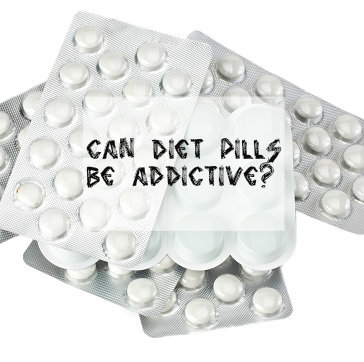 One prescription drug that works as an appetite suppressant is called phentemine.
One prescription drug that works as an appetite suppressant is called phentemine.
Another FDA-approved medication, which is available without a prescription, is called Alli. It aids in weight loss by blocking the body’s absorption of dietary fat. Other supplements claim to be able to block fat, but have not been evaluated by the FDA. They include ingredients like chitosan and guar gum.
The third and most dangerous type of diet drug includes stimulants. Stimulants are drugs that boost your metabolism causing you to burn more calories. Controversial pills, such as those that have ephedra as an ingredient, are often stimulants. Bitter orange is another herb you might see as an ingredient in a stimulant diet pill. Amphetamine, which is a prescription drug used to treat ADHD and narcolepsy, is often abused by people trying to lose weight because it is a powerful stimulant.
Are Diet Pills Addictive?
Most of the ingredients found in diet pills are not chemically addictive. In other words, unlike addictive drugs, they do not cause physiological changes to the brain that can lead to dependence. Stimulant drugs are an exception, especially amphetamine. Anyone abusing amphetamine to lose weight is putting herself at risk for addiction.
While most of the diet pill ingredients are not addictive, there is always the possibility of a psychological dependence on these medications. If someone you love is taking any type of diet pill more often than seems normal and is obsessing over her weight, she may have a type of addiction. She may also have an eating disorder or be on the path to developing one. It is important to intervene before she goes too far and really puts her health at risk.
What Are The Side Effects Of Taking Diet Pills?
There are plenty of potential side effects from all types of diet pills. Some are just uncomfortable, but others are dangerous. The riskiest side effects come from stimulants because they cause an increase in heart rate and blood pressure. When combined with alcohol, stimulants are especially dangerous. Other less serious side effects include headache, diarrhea, nausea, gas, constipation, insomnia and upset stomach.
How Can I Help If I Know Someone Who Is Overusing/Misusing Diet Pills?
If you know someone who is taking risks with diet pills, step in and express your concern. Educate your friend about the dangers of these pills, especially if she is taking stimulants. Encourage her to seek professional therapy so that she can learn how to have a healthy attitude toward her weight and her body. The best way to lose weight is through diet and exercise, so offer to be her partner in making good food choices and in working out.
Read More About Prescription Stimulant Abuse In Moms…And The Dangers
06 Mar 2014
What Is The Deadly New Designer Drug: “Smiles”?
Smiles is the street name for 2C-I, a potent synthetic hallucinogen that has psychedelic-like effects when ingested. Smiles belongs to the 2C family of compounds which includes another popular synthetic, 2C-B. This class of drugs is closely related to amphetamines, including methamphetamine. Smiles is often sold as a fine white powder or tablet, and is also mixed into candies. It can be snorted, smoked or eaten.
History And Distribution Of 2C-I
2C-I was first synthesized in the 1990s by chemist Alexander Shulgin, who is well known for synthesizing many other popular drugs. Smiles appeared as early as the early 2000’s in the Netherlands as a then-legal alternative to 2C-B, which had just been banned. Smiles was banned shortly after, in 2008, along with other 2C drugs.
The U.S. classified 2C-I as a Schedule I substance (meaning “no accepted medical value” and “high potential for abuse”) in 2012, making it illegal to make, distribute or possess.
The Dangerous Effects Of 2C-I
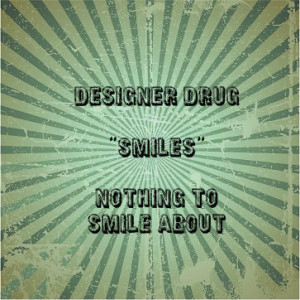 Some compare 2C-I’s effects to a very potent dose of LSD (acid) or MDMA (Molly) because of hallucinations and a feeling of euphoria. This drug, however, appears to be much more dangerous. Side effects include the following:
Some compare 2C-I’s effects to a very potent dose of LSD (acid) or MDMA (Molly) because of hallucinations and a feeling of euphoria. This drug, however, appears to be much more dangerous. Side effects include the following:
- Nausea and vomiting
- Muscle spasms
- Paranoia
- Seizures
- Raised blood pressure
- Kidney failure
What Are The Dangers Of 2C-I?
Unlike the more common hallucinogens, such as LSD and psilocybin (magic mushrooms), which typically do not cause overdoses, 2C-I may cause severe bodily harm, even at small doses. The white powder form of 2C-I is impossible to tell apart from other substances, and it can easily pass off as LSD when mixed into candy or blotting paper, putting casual LSD users at risk of experiencing 2C-I’s more severe side effects, or worse, an overdose. In addition, 2C-I can be difficult to detect by emergency room doctors, with many toxicology tests coming back negative. This could be due, in part, to smiles being laced with other compounds. Like heroin and other synthetics, smiles is notoriously impure. There is currently no established lethal dose of 2C-I, but the drug has been implicated in a number of deaths, both in the U.S. and Europe.
“Smiles” Overdose Tragedies
According to local news reports, in the summer of 2012, 17-year-old Elijah Stai of Park Rapids, Minn., ingested a fatal dose of smiles in a candy bar given to him by a friend. Only an hour later, while hanging out at the local McDonald’s, Stai’s smiles trip took a turn for the worse. His distraught friends and other eyewitnesses describe him acting “possessed”: hyperventilating, making strange sounds and repeatedly hitting his head against the floor. His worried friends took him back home in an attempt to let him calm down and “ride out” the high, but the day ended in tragedy. Less than two hours later, Stai stopped breathing. His story was sadly mirrored by another death in a nearby city just the day before when police found the body of a teen on a sidewalk; he had also suffered a fatal smiles overdose. Police blamed both incidents on a “bad batch” of 2C-I that was circulating on the streets at the time.
The story of the teens serves as a somber reminder of how dangerous synthetic drugs can be. Even if most 2C-I “trips” end without any tragic consequences, there’s no telling how safe the next dose will be, or if it’s even pure 2C-I. Experts are urging extreme caution around these drugs and warn that teens are especially likely to experiment with them.
Read More About The Dangers Of Designer Drugs
05 Mar 2014
FDA Announces Plans To Limit Acetaminophen Use
The Food and Drug Administration (FDA) has asked healthcare professionals to stop prescribing high doses of the painkiller acetaminophen, which is used in Tylenol, Vicodin and Percocet.
The FDA hopes to reduce liver damage in patients taking high doses. Because many drugs contain acetaminophen, the chances of an inadvertent overdose for someone taking several different prescriptions are likely and very dangerous. Acetaminophen overdose is the leading cause of acute liver failure.
How Drug Makers And Pharmacists Will Be Affected
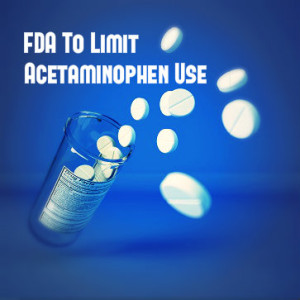 Drug makers are also being asked to consider limiting the amount of acetaminophen in prescription drugs to 325 milligrams or less per pill. Over half of drug makers have agreed. Another step the FDA has taken is recommending pharmacists who receive multiple prescriptions from doctors that, when combined, contain more than 325mg of acetaminophen per dose, contact the doctor who prescribed it and discuss other options.
Drug makers are also being asked to consider limiting the amount of acetaminophen in prescription drugs to 325 milligrams or less per pill. Over half of drug makers have agreed. Another step the FDA has taken is recommending pharmacists who receive multiple prescriptions from doctors that, when combined, contain more than 325mg of acetaminophen per dose, contact the doctor who prescribed it and discuss other options.
Are Over The Counter Drugs Included In FDA’s Limit Of Acetaminophen?
The FDA is also attempting to make drug makers take any drugs containing more than 325 mg of acetaminophen off the market. The warning issued by the FDA does not apply to Tylenol and other over the counter drugs… for now.
Acetaminophen And Alcohol – Dangerous Combination
The FDA explained there is no available data to show that more than 325 mg of acetaminophen provides additional benefits, but it does increase the risk of liver problems. When combined with alcohol, the effects of acetaminophen are even more dangerous. They also report that acetaminophen has been known to cause life-threatening skin reactions, including blisters, serious rashes and the detachment of the upper surface of the skin.
Preventing Acetaminophen Overdose
To decrease chances of overdose, individuals taking pain medications and other medications should read the labels of their prescriptions. The FDA maximum recommendation for adults is no more than 4,000 mg of acetaminophen a day.
Read More On The FDA Urges Public To Beware Of Phony Adderall Sold On The Internet


